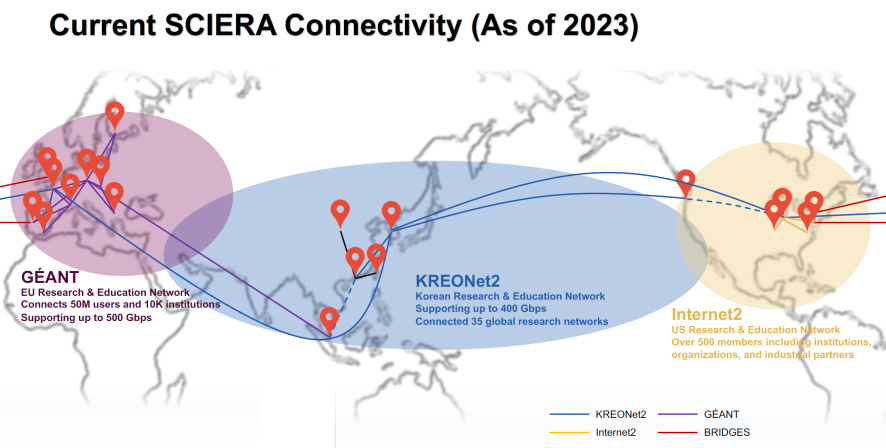SCION: Global Research Testbed Construction and Technology Development
Overview of SCION
SCION (Scalability, Control, and Isolation on Next-generation Networks) is a next-generation internet technology designed to maximize network availability, usability, and security. SCION aims to address the limitations of traditional IP-based internet networks, such as transparency and availability, by utilizing multipath communication, path-aware networking, and embedded security. This technology ensures higher levels of communication security and reliability.
Initially proposed in 2009, SCION has undergone rapid advancements over the past decade and is now considered one of the most advanced and practical future internet technologies. Currently, SCIONLab, a global research testbed, operates with around 50 core nodes and over 100 user ASes (Autonomous Systems) across Europe, North America, Asia, and Oceania. In addition, a native SCION network is being used by entities like Swiss banks, ISPs, government agencies, and research institutes.
Key Advantages of SCION
- High-Performance Data Transmission: Multipath communication enables simultaneous data transfer via multiple paths, providing faster transmission compared to single-path internet. Path-aware networking allows dynamic rerouting in case of link congestion, improving transmission quality.
- DDoS Defense: Path-aware networking allows victims to analyze packet headers, identify attackers, and preemptively block malicious packets using path control.
- Quality of Service (QoS): Network administrators can establish sophisticated routing policies at the AS level, offering more efficient QoS services to users.
- Fast Failover: Multipath communication ensures rapid acquisition of alternative routes in the event of a network link failure.
- Fault Tolerance: Issues in one part of the network do not affect other network segments.
- Network Virtualization: Path control enables logical network segmentation and merging, improving resource utilization.
- Cost Efficiency: Traffic is easily distributed across less-used network links, optimizing bandwidth utilization.
- Compatibility: SCION is compatible with existing internet protocols, allowing smooth integration with traditional networks.
SCIERA (SCION Education, Research, and Academic Network)
In 2022, KREONET signed an MoU with the SCION lab at ETH Zurich, collaborating with European research networks (GEANT) and US research networks (Internet2) to co-develop a secure global SCION core network for research and facilitate technical cooperation.
Expected Benefits
- Large-Scale Data Transmission: SCION’s multipath networking supports seamless transmission of large volumes of data, particularly benefiting domestic research institutions engaged in international collaborative research.
- Faster Network Response: SCION offers diverse paths to users, providing faster response times for latency-sensitive research and services like remote surgery and real-time robotic control.
- Secure Cloud System Construction: SCION supports cloud networking environments through network virtualization, dynamic network setup, and adaptive routing policies. It enhances access control and security with its embedded PKI (Public Key Infrastructure) system.
- Network Testbed Construction: SCIONLab’s global testbed allows researchers to participate and build their own fully functional AS environments, enabling a wide range of network research projects.
- Central Monitoring System: The built-in monitoring system provided by SCIONLab enables easy management of network elements and performance, facilitating comprehensive oversight.
SCION represents a significant step forward in internet architecture, offering enhanced performance, security, and flexibility for both research and practical applications.
